
Actina chalybea is a species of 'soldier flies' belonging to the family Stratiomyidae subfamily Beridinae.

Chloromyia formosa is a species of soldier flies belonging to the family Stratiomyidae. Another name for it is Broad centurion.
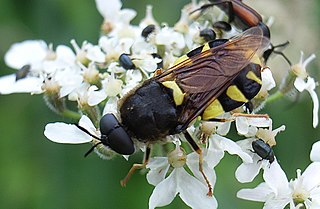
Stratiomys is a genus of flies in the family Stratiomyidae.

Oplodontha viridula, the common green colonel, is a European species of soldier fly.
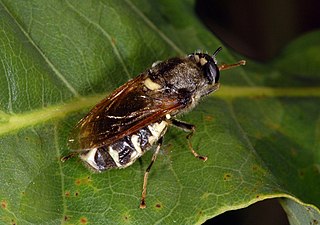
Stratiomys singularia, the flecked general, is a Palearcticspecies of soldier fly.

Sargus bipunctatus, the twin-spot centurion, is a European species of soldier fly.
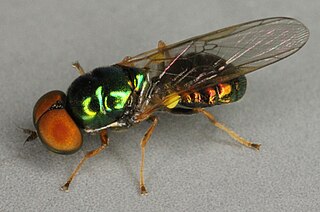
Microchrysa flavicornis, the green gem, is a European species of soldier fly.
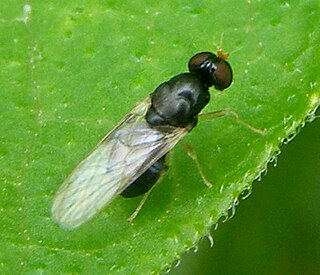
Pachygaster leachii, the yellow-legged black, is a European species of soldier fly.
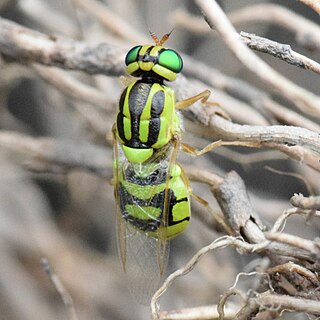
Oxycera trilineata, the three-lined soldier, is a Palearctic species of soldier fly. Boldly marked in yellowish-green and black, it is found in a variety of wetlands, including pools, ditches, fens and swampy river margins. It is found in North European Russia up to Leningrad; Central Asia, Siberia. Western Europe, north up to southern Sweden.

Oxycera is a genus of flies in the family Stratiomyidae.

Oxycera terminata, the yellow-tipped soldier, is a European species of soldier fly.

Oxycera rara, the four-barred major, is a European species of soldier fly.

Oxycera pardalina, the hill soldier, is a European species of soldier fly.

Oxycera nigricornis, the delicate soldier, is a European species of soldier fly.

Oxycera morrisii, the white-barred soldier, is a European species of soldier fly.
Oxycera fallenii, the Irish major, is a Palearctic species of soldier fly. The body length is 7.0 to 9.0.mm. The abdomen has three pairs of yellow spots, in addition to a yellow base and tip. Longitudinal stripes on the mesonotum are not connected with the yellow humeral spot. The legs are entirely yellow. This species is found in South European USSR East to Siberia and Western Europe to Ireland, Central Europe, South Europe and Turkey.

Chorisops is a genus of flies in the family Stratiomyidae.

Beris is a genus of flies in the family Stratiomyidae. They are also referred to as the false soldier fly. As described by Latreille in 1802, these are small to medium sized flies with metallic colors.

Adoxomyia is a genus of soldier flies in the family Stratiomyidae.

Xylophagus is a genus of flies in the family Xylophagidae.




















